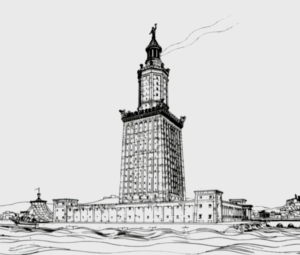Strata: Alexandria’s Lighthouse Found, But Will Its Library Disappear? Gabrielle Deford, Biblical Archaeology Review (23:3), May/Jun 1997.
Ancient Wonder of the World Rediscovered
In Alexandria, Egypt, history is no longer a thing of the past. Its ancient library, which held over a million volumes of the world’s knowledge in one place, is being rebuilt. And the remains of some of its other structures—the Pharos lighthouse, one of the seven wonders of the ancient world, and royal palaces that once were home to Cleopatra, Julius Caesar and Mark Antony—have been discovered in the waters of its two harbors.
Some scholars even speculate that new excavations will uncover the golden sarcophagus of Alexander the Great, who founded the city in 331 B.C. and was purportedly buried there after his death in 323 B.C.
But the excavations face formidable challenges. The ruins of the lighthouse and the palaces cover more than 5.5 acres—an archaeological gold mine, but a tremendous amount of territory to excavate, especially under water. Just mapping it—as Jean-Yves Empereur, director ofthe French Center of Alexandrian Studies, did preliminary to excavation in 1993—cost about $500,000.
Many of the finds, the thousands of statues and pieces of buildings, are colossal (like the obelisk at lower right). Marble blocks fallen from the lighthouse weigh 50 to 75 tons each. Some of the statues once stood 30 feet tall. The smallest fragment, a red granite torso of a woman that was floated to the surface by special balloons and hoisted to shore by a giant crane, weighed 1.5 tons.
Read the rest of Strata: Alexandria’s Lighthouse Found, But Will Its Library Disappear? in the online Biblical Archaeology Society Library.




